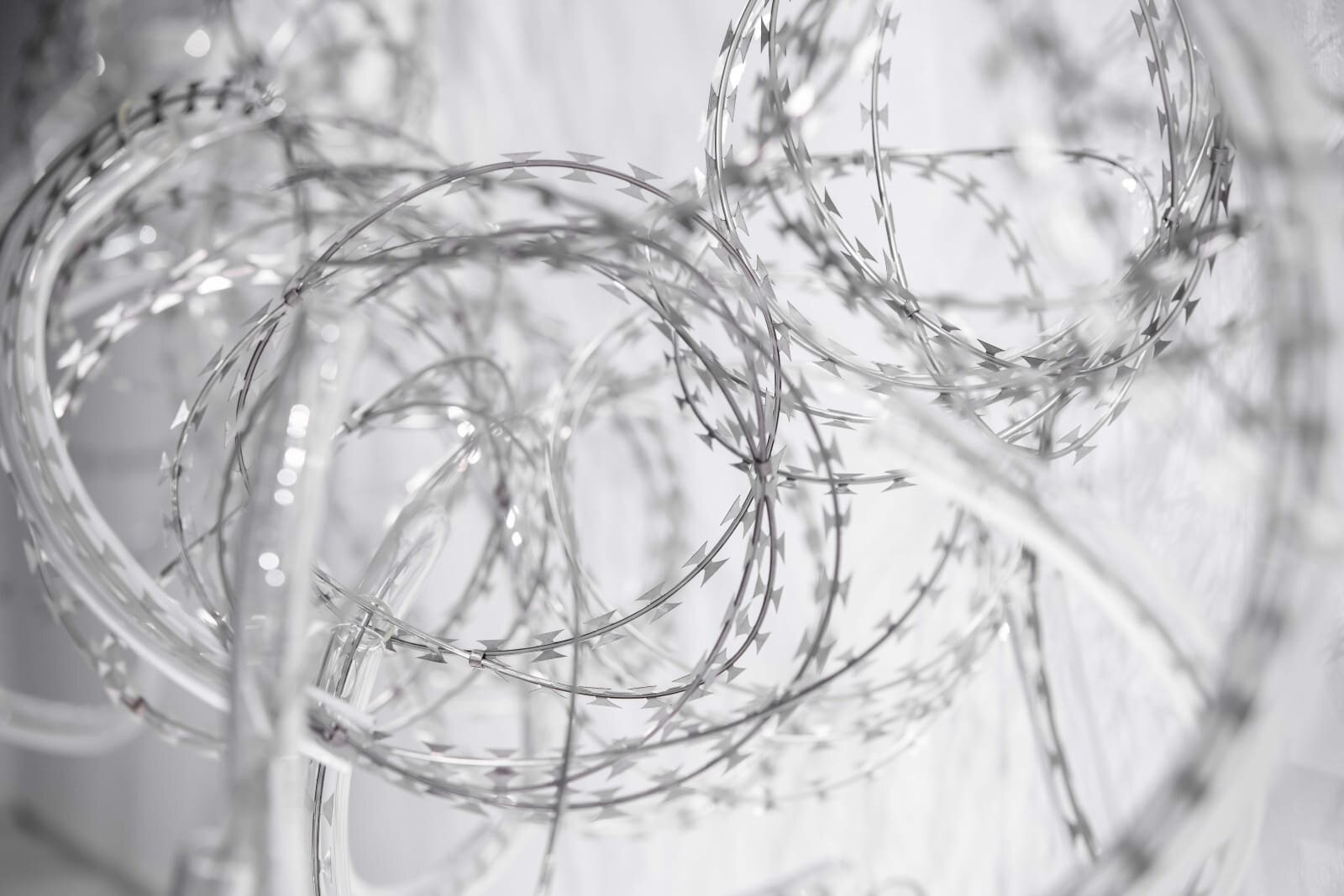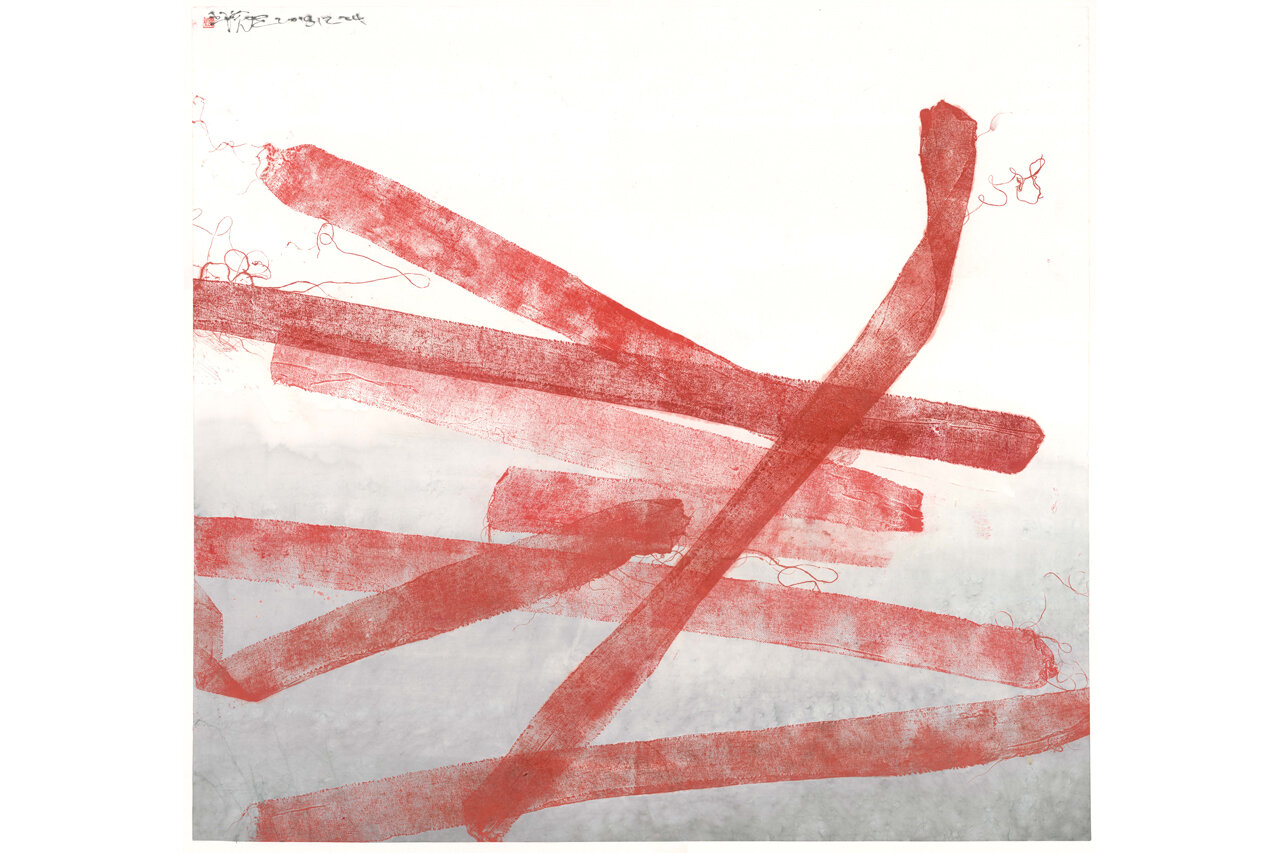Wang Huangsheng: Lifelines
王璜生:不息之線
3812 Gallery, Hong Kong
3 - 12 Sept 2019
About
And when the shadow fades and is no more, the light that lingers becomes a shadow to another light. And thus your freedom when it loses its fetters becomes the fetter of a greater freedom.
Kahlil Gibran, The Prophet (1923)
In Lifelines, a range of works by the distinguished artist Wang Huangsheng are brought together in a public civic space in the centre of Hong Kong and at 3812 Gallery. ‘Lifeline’ is a term in English that implies the saving of life when one is in urgent need of help and the connotation of rescue is here intended culturally, as a metaphor for Wang’s lines as cultural thread, just as the trunk of a tree steadily grows upwards, supporting all the branches, his lines form the key element throughout his oeuvre. As an important member of the art world and someone whose roles have navigated being a museum director, a founder of large-scale art events such as the Guangzhou Triennial and pursuing his own artistic practice over many years, Wang’s persistent artistic output and creativity can indeed be understood as a lifeline. His varied professional and artistic life has art at its centre, both publicly and privately.
Over the years, in his expansive ink practice, Wang’s pursuit of line has departed from a more classical mode in his earlier works to a more experimental abstraction that take various forms - from dense clusters of curvaceous lines lightly swooping in and out to express a sense of uninterrupted movement in space, through to more horizontal modes of thicker lines in his more recent works that are softly textured yet rigorous and bold. Though brush and ink are his principal medium, he also works with textiles, resin, newspaper and barbed wire, expanding his visual language in sustained bodies of work that contain ideas of vision, trace, and metaphor as central threads, each series visually evoking an undefinable visceral sense of being and aesthetic experience.
In particular, in the last few years, Wang’s exploration have allowed an engagement with the dynamics of line as an expanded element that has been increasingly freed from representation and containment of form. Newer works here include further explorations of line and composition, as well as non-legible ‘calligraphic’ paintings that verge on, but do not actually form, language, that in his words, ‘recall his classical self as a teenager’, when he fervently took up the passion of poetry. The suggestive quality of these works and the expansion of Wang’s distinct artistic language are important additions to his earlier series.
Indeed, in Lifelines, there is one further theme - that of language. Lines are in everything we read, in lines of text but also as the basic component that form words, whether in Chinese characters or the Roman alphabet, or indeed any script. Writing is essentially line and how it formed into so many variant kinds of script feels mysterious and arbitrary, recalling our ancient past and the foundation of different cultures. There is a tension in Wang’s work in the balance of the lines, suggestive of calligraphy, the fundamental tenet of ink painting, in the need for compositional harmony. His recent series are finely wrought pieces of almost-language-abstract brush-marks of poetic thin lines of controlled chaos calling to mind the wild cursive script that ‘flies’ across the paper. The idea of language can be explored as a key form of human communication, with the relationship of ‘langue’ (language) and ‘parole’ (speech), as developed by Saussure separating an overall system from what we actually write or say, the specifics of human interaction. Here, language becomes a memory, an illusion, and a trace, of meaning that has passed. The ephemerality of experience echoes the Buddhist notion of emptiness (‘that which is form is emptiness, that which is emptiness for) the last line of the Heart Sutra, extracts of which are inscribed in Wang’s hand on his recent Moving Image (2017/18) series.
Lifelines will showcase Wang’s magnificent new series of calligraphic works Daily-Practice, the Prose Poetries. Wang believes: ‘Daily-Practice is a way for the Chinese to cultivate cultures. We would waste thousands of paper sheets just for practicing calligraphy, but poetry writings are more like playing a game of expressing emotions.’ During the daily practice of calligraphy, Wang rewrote some of his classical poetries created in his youth in the 1970s, infusing colours into fluid cursive script and thereby combining painting and calligraphy into one. The colours blue, yellow and green mark the works’ mood in this series, blended with water and ink on Xuan paper. Through the practice as a daily ritual, the artist is to attain “cultivation” and “enlightenment”. The “chaotic” script where characters overlay each other contains the artist’s classical sensibility, as well as a fusion of aesthetic and conceptual meanings that echo and reverberate with the past.
The exhibition is curated by Katie Hill, Director of the Office of Contemporary Chinese Art.



















